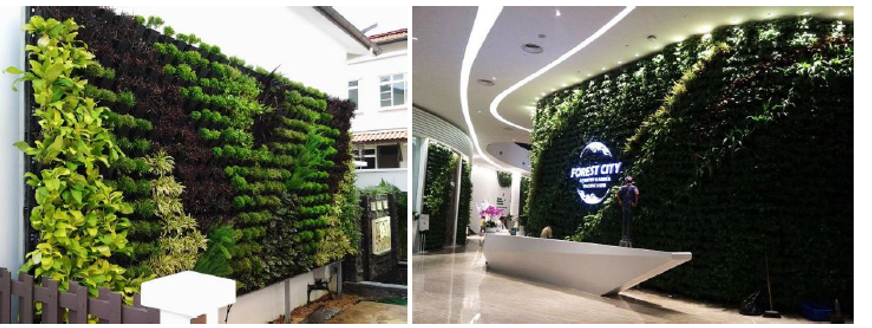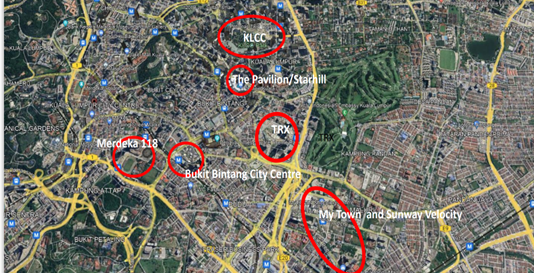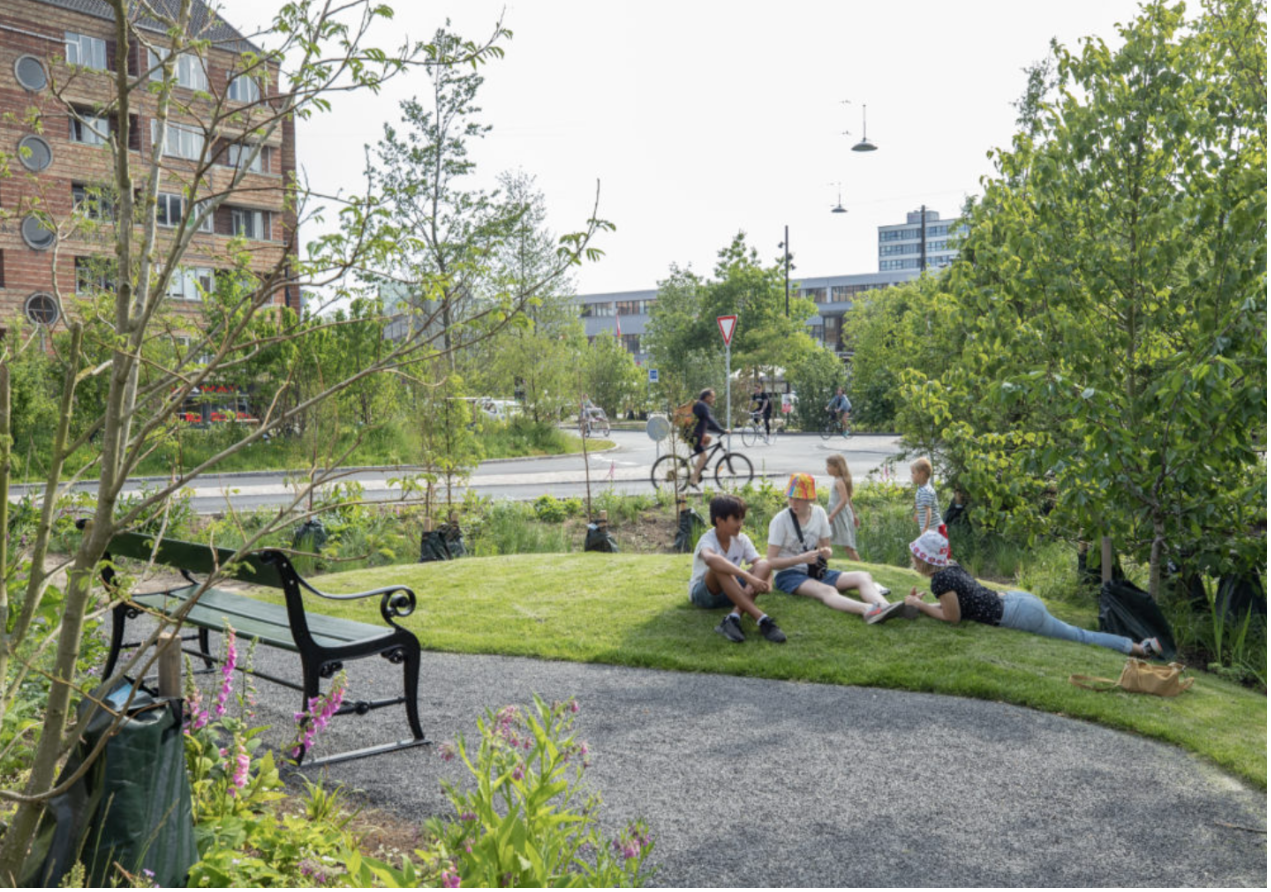Vertical greenery system (VGS) is the subset of the green infrastructure. This system is a global trend towards increasing the higher potential for improvement of the Sustainable Development Goals. It has two main approaches: the green façade system (GFS) and the living wall system (LWS). Generally, the GFS is known as a ground-based system, while the LWS is recognized as a wall-based system.
The four types of green façade are traditional green façades as displayed in Figure 1, double-skin green façades, perimeter flowerpots and double-skin green façades with planter boxes. This system illustrates the possible presence or absence of the supporting structure for climbers. The support structure has two benefits: to prevent the vegetation from falling and to create an air gap between the surface of the building and the vegetation. As many empirical studies have proven, the LWS provides more beneficial ways of dealing with environmental problems than the GFS. At the same time, an LWS provides a variety of plant selections. It offers a noticeable appeal to the aesthetic values due to the planting characteristics and the colour of the leaves.
There are three types of LWS: landscape wall, continuous and modular LWS. Landscape walls are the only effective greening method of VGS that are fitted using ecological engineering principles. The walls are an evolution of landscape berms and are part of a strategic approach for the LWS. In landscape design, berms are used for capturing runoff and are usually constructed perpendicular to a steep slope.
A continuous LWS is a fabric layer that is usually attached to a few layers of waterproofing membranes and a supporting structure, such as a metal frame or solid walls. It protects the wall from moisture by preventing water seepage. It has two layers of synthetic fabric that support the growing medium and the plants. This system has no requirement for soil due to the application of a fabric layer, like geotextile, that serves as a growing medium. The most prominent example is in Blanc’s works which create a subtle mixture of effects and forms.
Meanwhile, a modular LWS can be from planters as illustrated in Figure 2, panels and hanging pocket-shaped modules. These systems can be designed for a planting pallet through vertical, angled, or horizontal planting to demonstrate a more aesthetically pleasing building façade. Pre-grown plants are used as a planting method whereby plants receive more intensive care in a nursery and are then transferred to the site resulting in better plant growth control using pre-grown modules. It provides the opportunity to control costs by providing the easy replacement of individual unhealthy plants; thus, it has a significant benefit regarding maintenance work.
Figure 1 : FRSB’s building demonstrated traditional green façade.
Figure 2 : Example of modular living wall system installed in Malaysia.
 |
Dr. Azmiah Abd Ghafar
Pensyarah ,
Fakulti Rekabentuk dan Senibina,
Univerisit Putra Malaysia.
|
Tarikh Input: 21/02/2023 | Kemaskini: 21/02/2023 | uswahhasanah
PERKONGSIAN MEDIA































